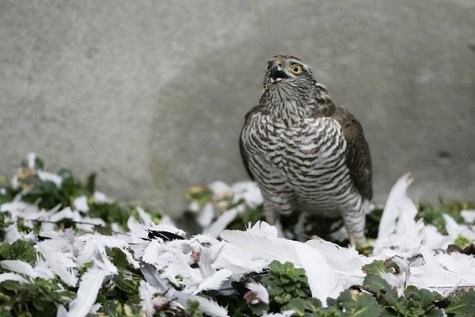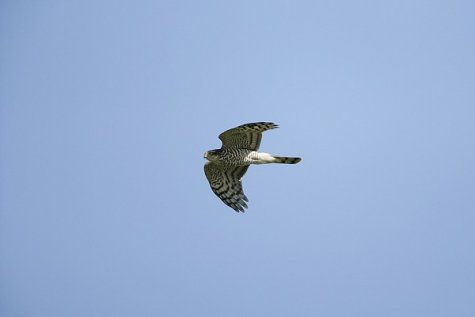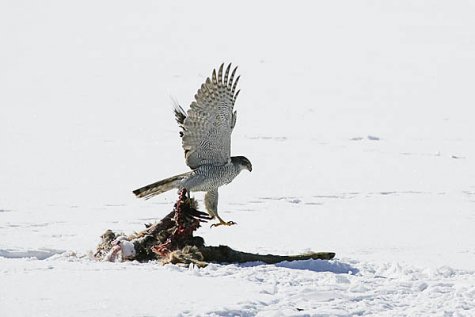In winter birds of prey in action can be seen in cities too
Photos: Arne Ader
Translation: Liis
Sparrowhawk
Sparrowhawk; Eurasian sparrowhawk Raudkull Accipiter nisus
The severe winter weather made passerines gather near feeders and this in turn provides opportunities for raptors. It should be said at once that we see no reason to drive off the birds of prey (their numbers are very small and they keep up similar hunting throughout the year); but it offers a very good opportunity to observe the birds of prey and their behaviour at close quarters.
The attack of a sparrowhawk is lightning quick and their dives through the bare tree crowns are impressive. Sparrowhawk females are bigger than the males and seem to be more grey-coloured. Only they manage to overpower domestic pigeons, to hunt passerines is left to the ”stronger sex”. They attack using similar tactics, quietly slipping closer to the prey in order to surprise with a lightning attack. With the prey they fly to some familiar and secure place.
The male birds are much smaller and lighter than the females, with a more attractive exterior, but beauty is in the eye of the beholder. The little robbers have a length of thirty to forty centimetres, males weigh only around 150 grams, the weight of a large female may exceed 300 grams. The plumage on the male’s underparts is banded and rust red. The females seem “greyer” than the males – the upper parts of a female are greyish brown, tail dark grey with sparse cross streaks. The bright yellow eye colour of the adults can sometimes be orange red. The beak is bluish grey and the cere greenish yellow, legs have the same colour.
Sparrowhawk
The more numerous sparrowhawk can be confused with a goshawk, with a rather similar plumage but bigger – one individual is active this winter in the Löwenruh park in Tallinn. The tail of a sparrowhawk is narrower, the head seems larger in relation to the body and the neck shorter; the flight image thus looks T-shaped – a few quick wingbeats and it rises higher up into the air followed by gliding flight.
The wings of a goshawk are placed towards the rear, and in the flight image they look almost like a cross in relation to the body of the hawk. Examine the photos and you will note the differences.
Sparrowhawk observations: LINK
Goshawk observations: LINK
Goshawk on roe deer carcass











